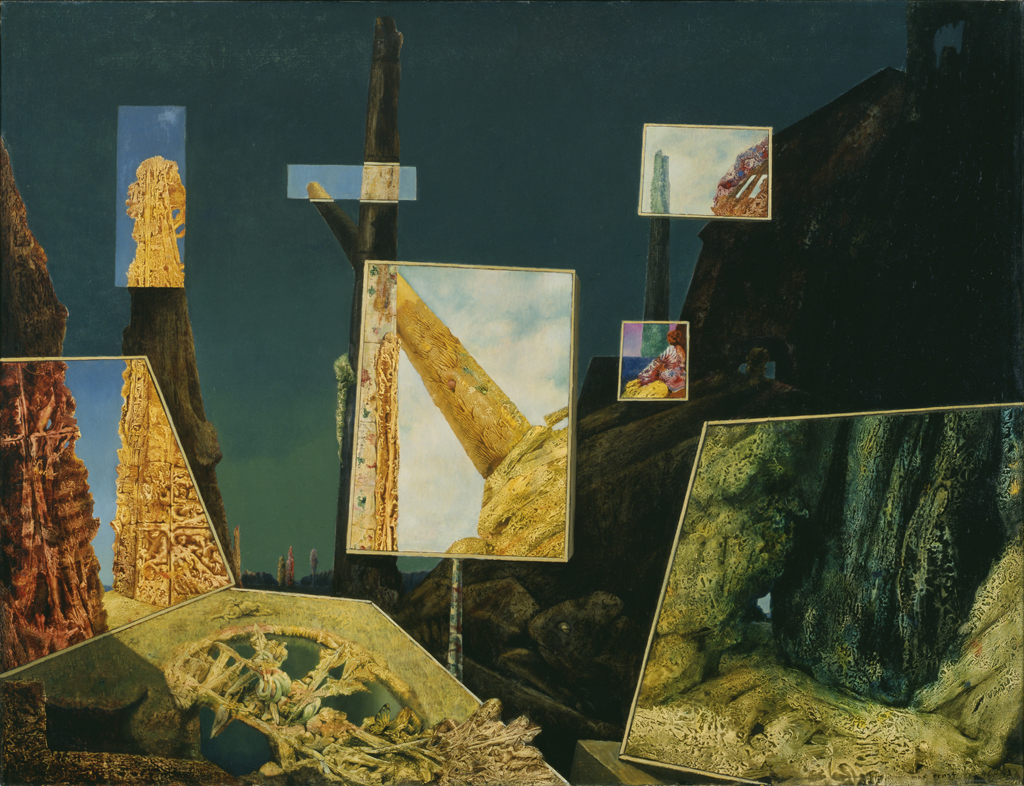Max Ernst created Day and Night, 1941–42, using decalcomania, an automatic technique he innovated with the aim of removing conscious control from his artistic practice. In this process, paint is pressed between two surfaces and the top layer is removed, leaving mottled and blotchy pigment on the support. The resulting texture can suggest any number of surfaces, including those of the ancient stone monuments that populate this landscape. Ernst isolates certain passages and encloses them in trompe l’oeil gilded frames, creating paintings within the painting. While darkness permeates the scene, those smaller canvases are brightly lit as though on display in a gallery or museum. As its title suggests, Day and Night reconciles opposites, not only of daylight and nighttime, but also of art and nature, conscious and unconscious, even the Old World and the New, as Ernst started the painting in France and completed it upon his arrival in the United States. In 1944 Ernst provided a poetic statement about the work for the catalogue for the exhibition Abstract and Surrealist Art in America at the Sidney Janis Gallery. He wrote, “Night and Day, or The Pleasures of Painting: To listen to the heartbeats of the earth. To yield to that fear which comets and the unknown inspire in men. To put out the sun at will. To light the searchlights of night’s brain. To enjoy the cruelty of one’s eyes. To see by the soft gleam of the lightning. The majesty of trees. To invoke the fireflies…”



